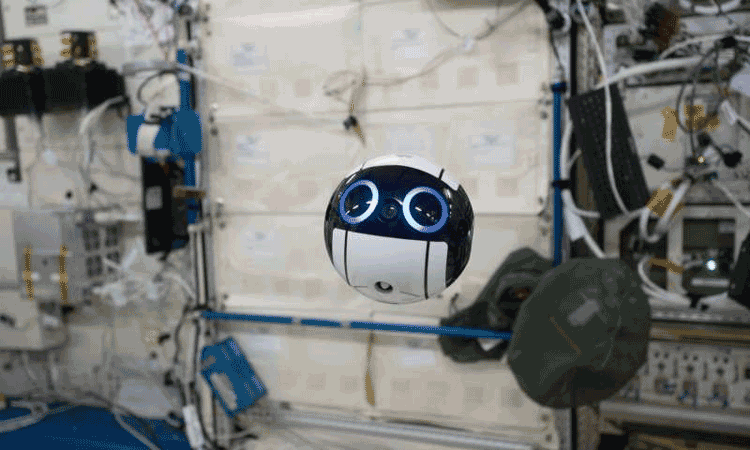Floating Space Ball Camera Drone To Help Onboard ISS
The Japan Aerospace Exploration Agency (JAXA) has disclosed the first images and movies that have been shot by the ‘Int-Ball’, which is short for Internal Ball Camera. This is a cute-looking and efficient camera that floats around alongside the rest of the crew.
It was delivered to the module Kibo on the International Space Station (ISS).
How cute? Well, if you see the pictures, it has those engaging blue, circular eyes and the camera is between the two eyes.
JAXA called this its “first camera drone that can record video while moving in space under remote control from the ground.”
The camera can move autonomously in space and record still and moving images under remote control by the JAXA Tsukuba Space Center.
The camera drone can record video while moving in space under remote control from the ground, said the video notes.
The recorded images and videos can be checked in real time by flight controllers and researchers on the ground. These then can be fed back to the onboard crew.
The Int-Ball (which The Japan Times described as “about the size of a grapefruit-sized,”) has “a three-axis control unit. The cube-shaped brain converses with 12 fans positioned near the surface of the robot, which adjust its position in zero gravity,” said Nick Summers in Engadget.
The exterior and inner structures were all manufactured by 3D-printing, said JAXA.
The recorded images and videos can be checked in real time by flight controllers and researchers on the ground, and then be fed back to the onboard crew.
The camera adopts existing drone technology and its exterior and inner structures were all manufactured by 3D-printing.
The Int-Ball enables astronauts to be more efficient, spending more time working on experiments and repairs.
How so?
“JAXA says crew members spend ten percent of their working hours with a camera in hand, photographing work or equipment that requires further evaluation. A floating camera drone could, in theory, alleviate the crew of that responsibility,” Summers said.
The team behind the Int-Ball had specific objectives in mind in their research and development.
One was achieving ‘zero’ photographing time by the onboard crew. Another was providing the capability of moving anywhere in autonomous flight and recording images from any angle.
The Int-Ball, said Darrell Etherington in TechCrunch, has “actuators, rotational and acceleration sensors and electromagnetic brakes to help it orient in space.”
JAXA has begun testing the spherical drone. The Japan Times: “After testing is complete, JAXA plans to deliver an improved drone next year with an automatic power-charging function that it hopes will completely free the ISS crew from its recording duties.” According to the report, the drone will be upgraded in the future, said JAXA, “so it can check on the space station’s supplies and help diagnose onboard problems.”


Comments are closed, but trackbacks and pingbacks are open.